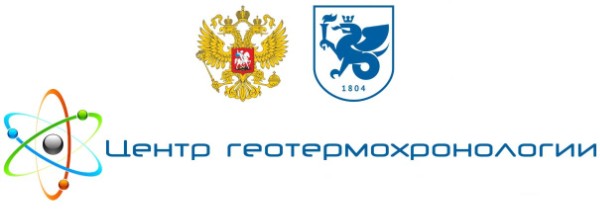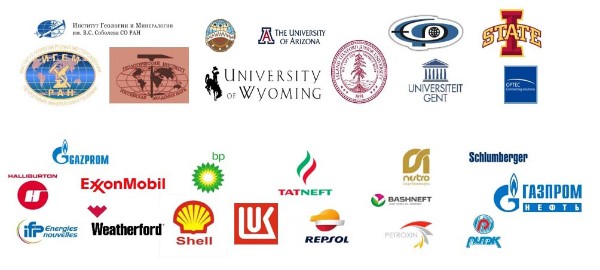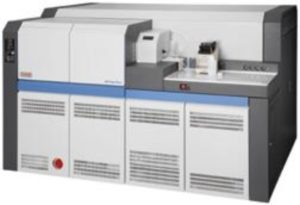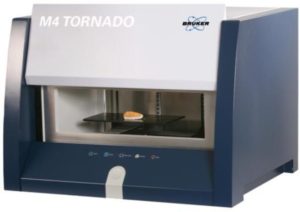
Center for Geothermochronology was established in 2018 to attract top international talent to Russian universities as part of the so called ‘megagrant program’ (‘project 220’) and the State Program of Scientific and Technological Development of Russia.

Research
Geochronology
Thermochronology
Chemical stratigraphy
Types of analyses
The Center's objectives
Research supervisor
Mikhail Buslov
Chief Research Associate, Laboratory of Geodynamics and Magmatism, Institute of Geology and Mineralogy, Russian Academy of Sciences
Doctor of Science in Geology and Mineralogy
Expert in geochronology, geotectonics, and geodynamics of folded areas
Dr Buslov has supervised dissertations in Russia, Belgium, and Japan
 |
Isotope mass spectrometer Delta V Plus (Thermo Fisher Scientific, Germany)
Allows you to determine the ratio of stable isotopes of light elements: H/D, 13C/12C, 15N/14N, 18O/16O, 34S/32S Analyzes the substance in the gas, liquid and solid phases using modules for combustion in oxygen, oxygen-free pyrolysis, acid treatment, gas chromatography. Simultaneously with the isotope analysis of a substance, it allows its chromato-mass-spectrometric analysis. In addition to isotopic analysis, the device allows you to obtain the quantitative composition of the elements being determined |
 |
Isotope mass spectrometer Neptune Plus (Thermo Fisher Scientific, Germany)
Allows you to determine the ratio of isotopes of almost all elements. The analysis is carried out both for liquid and solid samples, having previously dissolved them. For solid samples, it is possible to carry out local microanalysis by laser ablation with a dot size from 10 to 250 microns |
 |
Wave-dispersive X-ray fluorescence spectrometer S8 Tiger (Bruker, Germany)
Allows you to determine the elemental composition of solid, powder and liquid samples in the range from B to U in a vacuum or helium atmosphere. Samples can be analyzed without destruction. Carrying out analyzes by pressing samples with various binders or fusion with flux. The grinding of the sample is carried out by disk vibration and planetary ball mills, pressing is carried out by an automatic press with a pressure of up to 40 tons. |
 |
Polycapillary micro X-ray fluorescence spectrometer M4 Tornado (Bruker, Germany) Allows you to determine the elemental composition of solid, powder and liquid samples in the range from Na to U at a point with a diameter of 25 microns in air or vacuum. It makes it possible to map the distribution of elements on the sample surface up to 33×17 cm in size and build a 3D distribution of elements in the sample. Can determine the thickness of coatings up to 9 layers. |
 |
Portable X-ray fluorescence analyzer S1 Turbo LE (Bruker, Germany)
Allows you to determine the chemical composition with high speed and accuracy, determine the grade of metal, including the analysis of titanium and aluminum alloys without vacuumization and helium purge. Determines the concentration of all elements in the sample in the range from Mg to U, including light chemical elements Mg, Al, Si, S and P in alloys based on iron, nickel, titanium, copper, aluminum, etc. With the S1 TurboSD LE analyzer, you can measure Al in titanium alloys, Mg and Si in aluminum alloys without evacuation and helium purge. The device has an extensive library of grades of various alloys. |
 |
Synchronous thermal analyzer STA 449 F1 Jupiter combined with mass spectrometer QMS 403 D Aeolos (Netzsch, Germany)
Allows you to study the thermal properties (mass loss during heating, thermal effects of chemical reactions, heat capacity, thermal effects of phase transitions, etc.) of samples in the temperature range from 30 to 1500?C with a heating rate of 0.01 K/min – 50 K /min with autosampler in automatic mode. Analysis is possible in an inert, oxidizing or reducing atmosphere in a platinum furnace or in a steam atmosphere in a special furnace. Weighing range up to 5000 mg with resolution up to 25 ng. Simultaneous analysis of gases with a mass spectrometer via a heated adapter. Equipped with the unique PulseTA system |
 |
Mass spectrometer with inductively coupled plasma iCAP Qc (Thermo Fisher Scientific, Germany) Allows high-precision elemental analysis of solid and liquid samples. Provides the ability to analyze ultra-low quantities and concentrations of samples. Liquid samples are analyzed directly, solid samples are pre-dissolved, and for solid samples, it is also possible to carry out local microanalysis by laser ablation with a dot size from 10 to 250 microns. |
 |
Raman confocal microscope inVia Qontor (Renishaw, UK)
Allows you to determine the phase composition of solid and powder samples at a point with a diameter of 500 microns, allows you to study the spectra of Raman scattering, the composition of gas-liquid inclusions. It makes it possible to map the distribution of phases over the sample surface and build 3D maps. |
